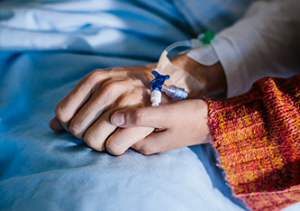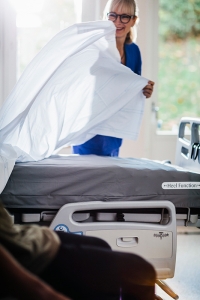This is how you make the bed for a person at risk for pressure injuries
Customize the bedding based on the care recipient’s needs
A guideline for bedding is to not use more material than necessary. Too many layers can affect the pressure-relieving and pressure-distributing properties of the surface and increase the burden on the skin (1). Before making the bed, it’s important to identify who you are making the bed for. Customize the bedding according to the care recipient’s condition and overall health. Also, consider personal comfort as it is important for the care recipient to sleep comfortably.



